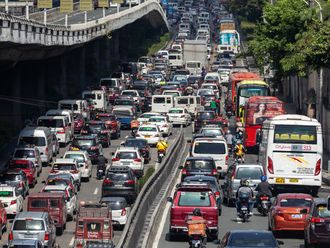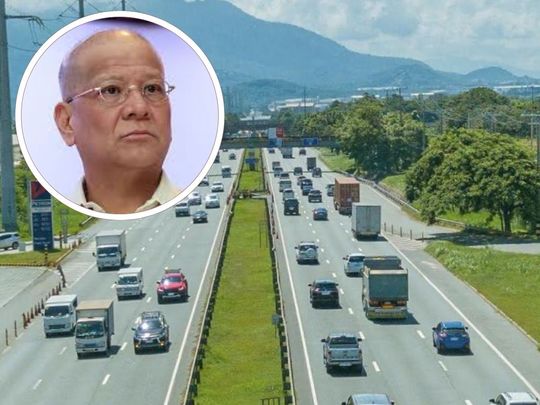
Highlights
- The 420-km Toll Road 5 project from Lucena to Matnog, in Bicol is currently under development, with Segment 1 in progress.
- It seeks to cut travel time from Manila to Legazpi City from about 11 hours to 5 hours.
- Project won't be easy. Here are the key challenges:
Manila: Filipino business magnate Ramon S. Ang (also known by his initials "RSA"), the titan dubbed as the "king" of infrastructure, is poised for his most audacious feat yet.
A behemoth of a project looms on the horizon: the Quezon-Bicol Expressway (QuBEx), also known as South Luzon Expressway Toll Road 5 (TR-5), estimated to cost $3.38 billion, or 193.62 billion pesos.
This 420-km concrete colossus aims to bridge the gap between the rebels-riddled Quezon province and the tourism-hungry Bicol region.
Challenges
The Philippines hosts Asia's longest-running communist insurgency, which peaked during the 21-year regime of the strongman Ferdinand Marcos Sr., crushing the energy and creativity of its young people. The regime was deposed in 1986 in a civilian-backed military coup led by Fidel Ramos and Juan Enrile, from Marcos Sr's own tribe, the Ilocanos.
Until the recent past, insurgents have torched heavy equipment used in major projects, leading to huge losses, slowing down work, leaving infrastructure in a perrennial state of disrepair, and driving investors away.
Oddly, now, his namesake Ferdinand "Bongbong" Marcos Jr., the sitting president, could usher in its logical end with a mix of soft and hard power, including rallying investments from business moguls like Ang.
The big difference between then and now: Public-Private Partnership (PPP) scheme, adopted in the early 1990s, which bankrolls public projects with private money.
It's a game-changer. Compared to when contractors favoured by local strongmen-politicians are at work, PPP ensures big-ticket projects are done without state funding, are delivered on time, and according to specs.
Upsides
The Philippines has successfully leveraged domestic financing for PPPs, thereby curbing reliance on foreign debt, bolstering key infrastructure, such as toll roads, airports, and power plants.
Improved connectivity in Southern Luzon could, with a bit of luck, greatly enhance the lives of millions along the way.
The new code brings together various PPP-related laws into a single comprehensive legislation, eliminating inconsistencies and ambiguities, in order to attract more private investments, and improve the efficiency of government projects, ultimately leading to improved public infrastructure and services.
To get there, a raft of challenges awaits Ang's team. Not only must they navigate the treacherous terrain, but also the labyrinthine politics of countless local government units (LGUs), each with its own agenda and appetite.
This is no ordinary construction project; it's a high-stakes task in a region brimming with potential and peril.
Securing support from Manila’s authorities will be crucial to its success. If Ang is unable to deliver, less-capable competitors will struggle to execute a project of this scale, one that carries such high expectations.
$ 3.38 b
Cost in US dollars of the 8 segments of South Luzon Expressway TR-5 ($460 million, or 26.38 billion pesos, earmarked for Segment 1, from Lucena to Gumaca)Pockmarked, patchwork road
For generations, a Manila-Bicol "freeway" has been a mirage on the horizon, a tantalising promise unfulfilled.
The reality has been a torturous journey along a pockmarked, patchwork road, the sole artery connecting the nation’s heart to its southern provinces.
Luzon's geographic character is compounded by the reliance on roll-on-roll-off ferries to bridge the gap to the Visayas and Mindanao.
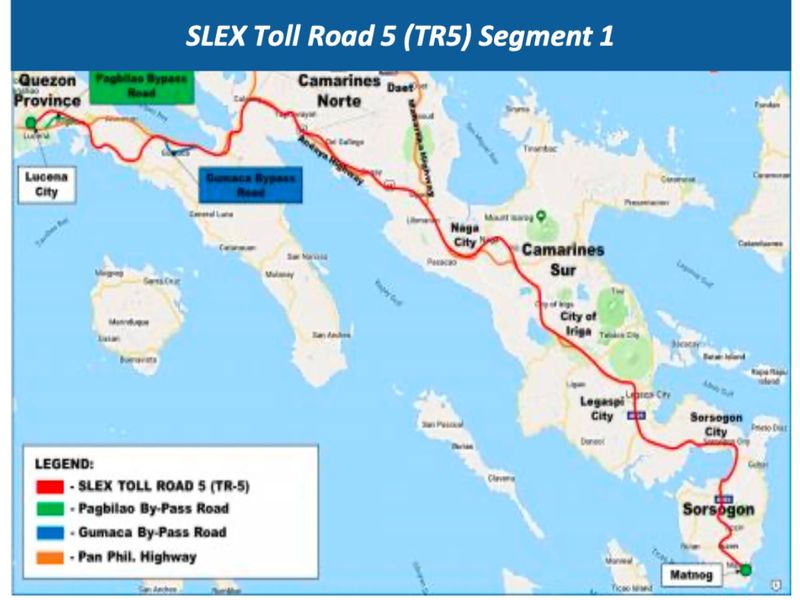
Bicol, a region brimming with untapped potential and natural splendour, including the iconic Mayon Volcano, has been held captive by its infrastructure shackles, and reports of corruption linked to public works projects. Home to over six million Filipinos, it yearns for seamless connectivity.
Enter RSA and his infrastructure empire. San Miguel Corp. is involved in food, agribusiness, beverages, infrastructure, power and energy. Across these sectors, SMC employs more than 50,000 – excluding those working in foreign operations and the companies.
50,000
estimated number of employees of companies under San Miguel groupThe industrial titan, with personal net worth estimated by Forbes at $3.8 billion, is one the country's most ambitious CEOs.
With SMC's track record, the stage is set for a historic undertaking that could redefine the landscape of Luzon, the Philippines's main island about thrice the land area of Switzerland.
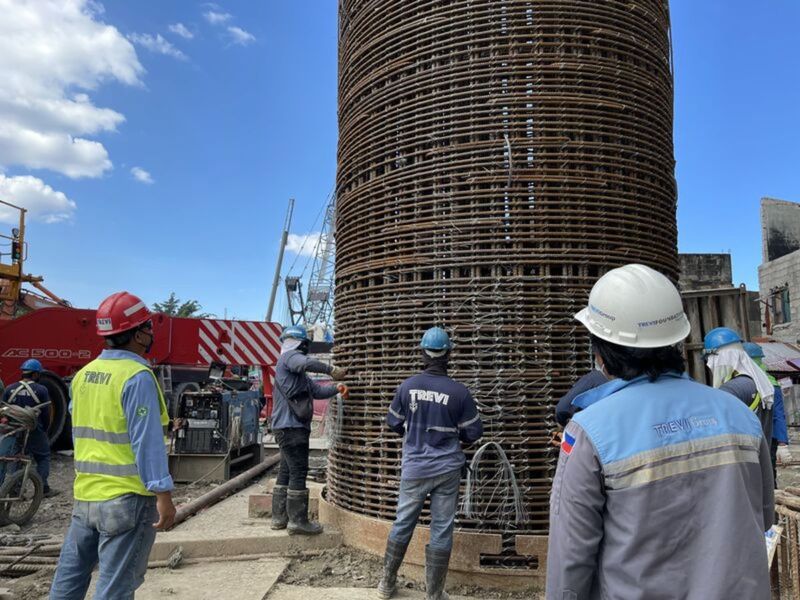
On fire at 70
In a recent “Bagong Pilipinas” interview, Ang expressed confidence he can tackle fresh infrastructure challenges, including the QuBex/TR-5.
At 70, the Filipino tycoon is widely admired for his business acumen and appears unstoppable.
He has also recently unveiled plans to connect Luzon to the Mindoro Island through a $384-million “15-km megabridge” through a PPP arrangement with government, and promises to keep reinvesting the bulk of SMC's earnings locally.
Ang shared with host Tunying Taberna his plans to further extend the expressway network. “Tarlac-Pangasinan-La Union Expressway (TPLEX) will be connected from Rosario (before going up to Baguio) to San Juan, La Union. That’s another 60km extension. So we’ve sorted the road to the north (of Manila). Going to the south, it will reach Matnog in Bicol.”
Work on the South Luzon Expressway Toll Road 4 (TR-4) from Santo Tomas, Batangas to Tayabas, Quezon will be completed by 2027, Ang said. Initial work on TR-5 is underway. All told, San Miguel’s portfolio now includes 787.54 km of tollways in Luzon.
Tarlac-Pangasinan-La Union Expressway (TPLEX, 89.2-km)
Southern Tagalog Arterial Road (STAR, 41.9 km)
South Luzon Expressway (SLEX, 36 km)
Skyway System (118.09 km)
NAIA Expressway (NAIAX, 5.4 km)
SLEX Toll Road 4 to Lucena (66.74 km)
420-km SLEX Toll Road 5 to Bicol (420 km)
TR-5 by 2030
As for the construction timeline to TR-5 (QuBex), the tycoon said it will be completed “by 2030”.
The TR-5 will pose one of the biggest challenges for SMC. First the length: at about 420km, it pases through dozens of towns, and is bound to pose right-of-way snags.
From Lucena City, it will go through numerous towns in Quezon Province, before traversing more towns in the four provinces of mainland Bicol.
It comprises eight (8) segments which "will run parallel to the existing Philippine National Railway, Maharlika Highway and Padre Burgos National Road or Quirino Highway", according the terms prepared by the Toll Regulatory Board (TRB).
The board has issued a 30-year concession to South Luzon Toll Road 5 Expressway, Inc. (a joint venture of the San Miguel Holdings Corp. and the Philippine National Construction Corp).
The 61-km “Segment 1” of TR-5, from Lucena City to Gumaca town in Quezon, is estimated to cost 28.15 billion pesos, or about Php461 million per km.
Based on this, the total length of TR-5’s 8 segments comprising 420km would cost about 193.62 billion pesos ($3.38 billion).
The board has already issued the Toll Operation Certificate (TOC) for Segment 1.
Mathematically, even if SMC and its contractors complete the right-of-way (ROW), paving, preparation, concreting work at the rate of 250 meters per day, it would still take more than 5 years to complete the entire span. But San Miguel will not start from scratch.
The South Luzon road itself has undergone several changes in its planning and implementation. While there was initial enthusiasm and legislative support, the project's status has evolved.
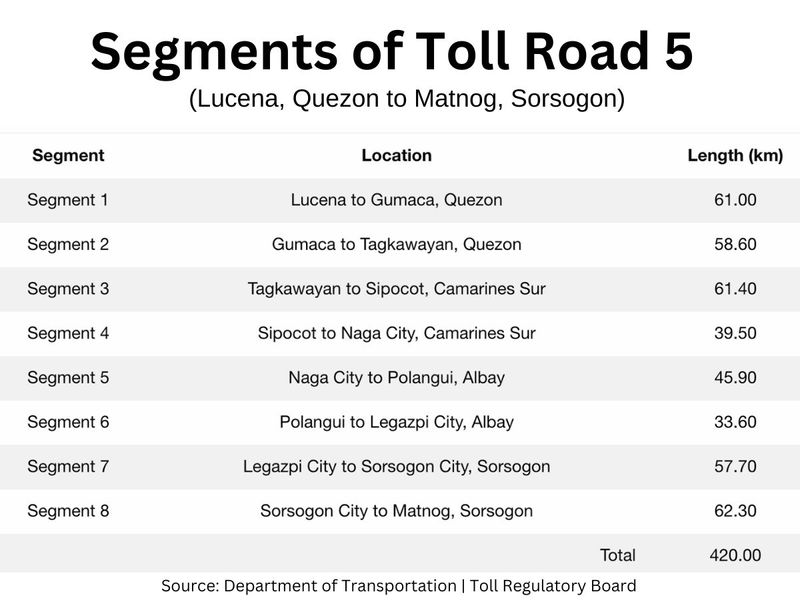
Certain portions of what would eventually become QuBex or TR-5 are already well paved. Here's part of the Sorsogon segment.
Timeline of QuBex / TR-5
- 2017: The original QuBex proposal emerged as a Public-Private Partnership (PPP) project, aiming to extend the South Luzon Expressway from Pagbilao to San Fernando, Camarines Sur, spanning 180 kilometers.
- 2018: The project was expanded to cover 220 kilometers and shifted to government funding through the General Appropriations Act (GAA).
- 2019: The Department of Public Works and Highways (DPWH) planned to complete a feasibility study by the third quarter of the year.
- 2020: The House of Representatives approved a measure mandating the construction of QuBex as a "transport and economic development strategy" for the Bicol region.
- 2021: The planned-Bicol Expressway (QuBex) Albay Rep. Joey Salceda urged the government to start the construction of the proposed QuBex that will cut the travel time from Manila to Albay to only five hours from the present 10-15 hours
- 2022: The project was removed from the priority projects list.
- 2023-Present: Focus shifts to the South Luzon Expressway Toll Road 5, which encompasses a similar route but with different implementation plans.
- 2030: Targetted completion of TR-5.







